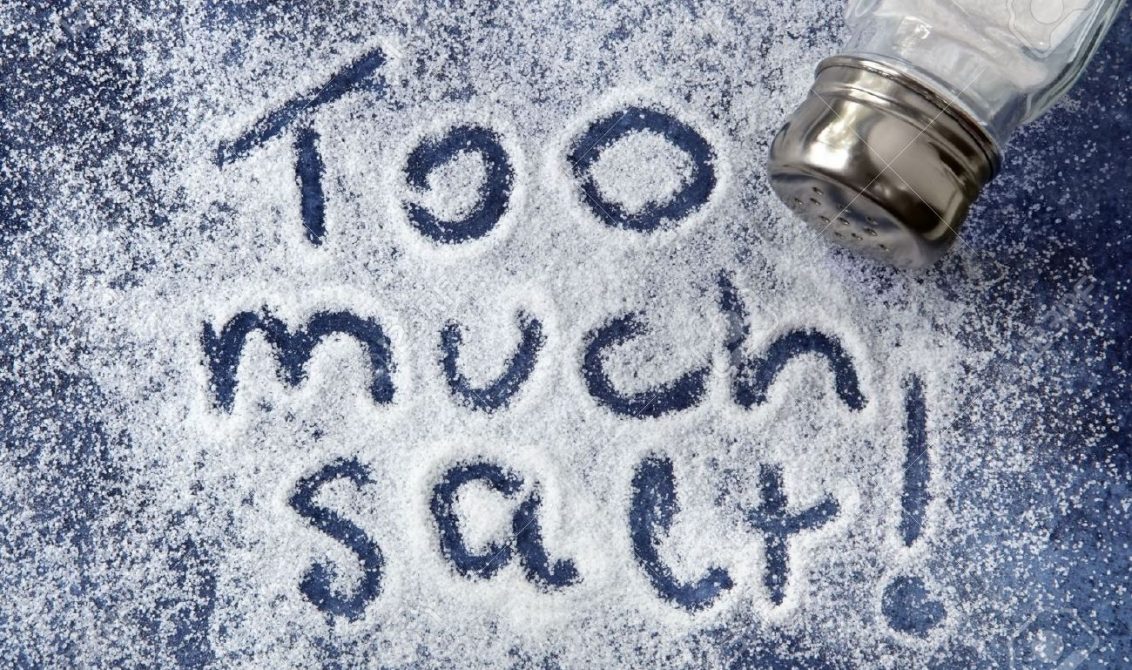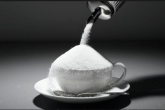
What is your usual reaction when you eat food that tastes bland? Be honest.
You add a bit of salt to try to improve the taste. Maybe a bit of pepper too. In fact, most of us add bullion cubes and lots of salt to our cooking to make sure that our meals are delicious. We have fallen for the clever advertising by bullion cube manufacturers that tell us that we can’t cook appetizing food without those little cubes. A word of caution – bullion cubes contain tons of salt. One cube has more than the recommended daily allowance of salt for an adult.

Salt isn’t a bad thing. It makes food tasty and, is necessary for life. Sodium, the mineral in salt, is crucial for proper function of your nerves, allows muscles to contract and relax, and maintains your body’s balance of water and minerals.
Like most things in life, finding the proper balance between what is needed and what is excessive is important.
Too much salt in your diet leads to extra sodium in your blood. It causes more water to be pulled into your blood vessels, increasing the amount of blood inside your blood vessels. Even though that sounds like a good thing, it’s not! Your blood pressure increases because more blood is flowing through your body. The high blood pressure can injure the blood vessel walls, cause a build-up of plaque, which can stop blood flow and lead to a stroke or heart attack. High blood pressure can also stretch or stiffen blood vessels, causing heart failure because your heart works harder to pump blood through the body.
Do you know that most of the food you eat that’s not cooked at home contains significant amounts of added salt? The excess salt comes mainly from pre-packaged processed foods like noodles, canned vegetables, soft drinks, and fast food like pizza and hot dogs. As we happily adopt the eat-on-the-run culture of developed nations, believing that it is a sign of economic progress, we’re increasing our risk of hypertension, stroke, kidney failure, diabetes and heart attack.
Here are the rough amounts of sodium in table salt:
1/4 teaspoon salt = 575 mg sodium
1/2 teaspoon salt = 1,150 mg sodium
3/4 teaspoon salt = 1,725 mg sodium
1 teaspoon salt = 2,300 mg sodium
1 bullion cube = 2300 mg sodium

How much salt should you be eating?
500 mg of sodium is all your body needs daily for proper function. That is less than a quarter teaspoon of salt. The American Heart Association has recommended that adults have no more than 1500mg of sodium daily. That is a little less than three-quarters of a teaspoon of salt for an entire day. Most people consume about one and a half to two teaspoons of salt daily – more than twice the recommended amount.
Black people are at greater risk of developing high blood pressure than other races. As you age also, you’re more likely to develop high blood pressure. High blood pressure is known as the “Silent Killer” because it has no symptoms and a stroke or heart attack is often the first sign that a person has the condition. It is the number one cause of death from non-communicable disease in Sub-Saharan Africa.
Reducing the amount of salt, you take daily is vital to prevent developing high blood pressure.

How to lower your salt intake
When shopping for food:
- Avoid packaged and prepared foods.
- If you have to buy them, choose carefully. Read labels and choose the product with the lowest amount of sodium you can find.
- Pick fresh or frozen chicken without added sodium solution.
- Choose condiments carefully. Bottled salad dressings, ketchup, and soy sauce can have huge amounts of sodium. Look for a reduced or lower-sodium version.
- Buy fresh vegetables only and avoid canned vegetables.

When preparing food:
- Use onions, garlic, herbs, spices, in place of some the salt to add flavor to foods.
- Grilling, roasting, and sautéing foods bring out the natural flavors and reduce the need to add salt.
- Cook pasta and rice, without salt. The stew or soup you serve it with will add flavor.
- If you use them, drain and rinse canned beans (like chickpeas, kidney beans, etc.) and vegetables – this can cut the sodium by nearly half.
- Foods high in potassium, like sweet potatoes, potatoes, greens, tomatoes, beans, oranges, and bananas help protect against the effects of sodium and may lower your blood pressure.
- Control portion sizes. When you cut calories, you usually cut the sodium too.
- Taste your food before adding salt.
Cooking with less salt is really not terrible especially when you use flavourful ingredients and different cooking methods to improve your food. As you take steps to reduce salt gradually, your taste buds will adjust to prefer less salt, and the foods you used to enjoy will taste too salty. Give it a try, start today!

